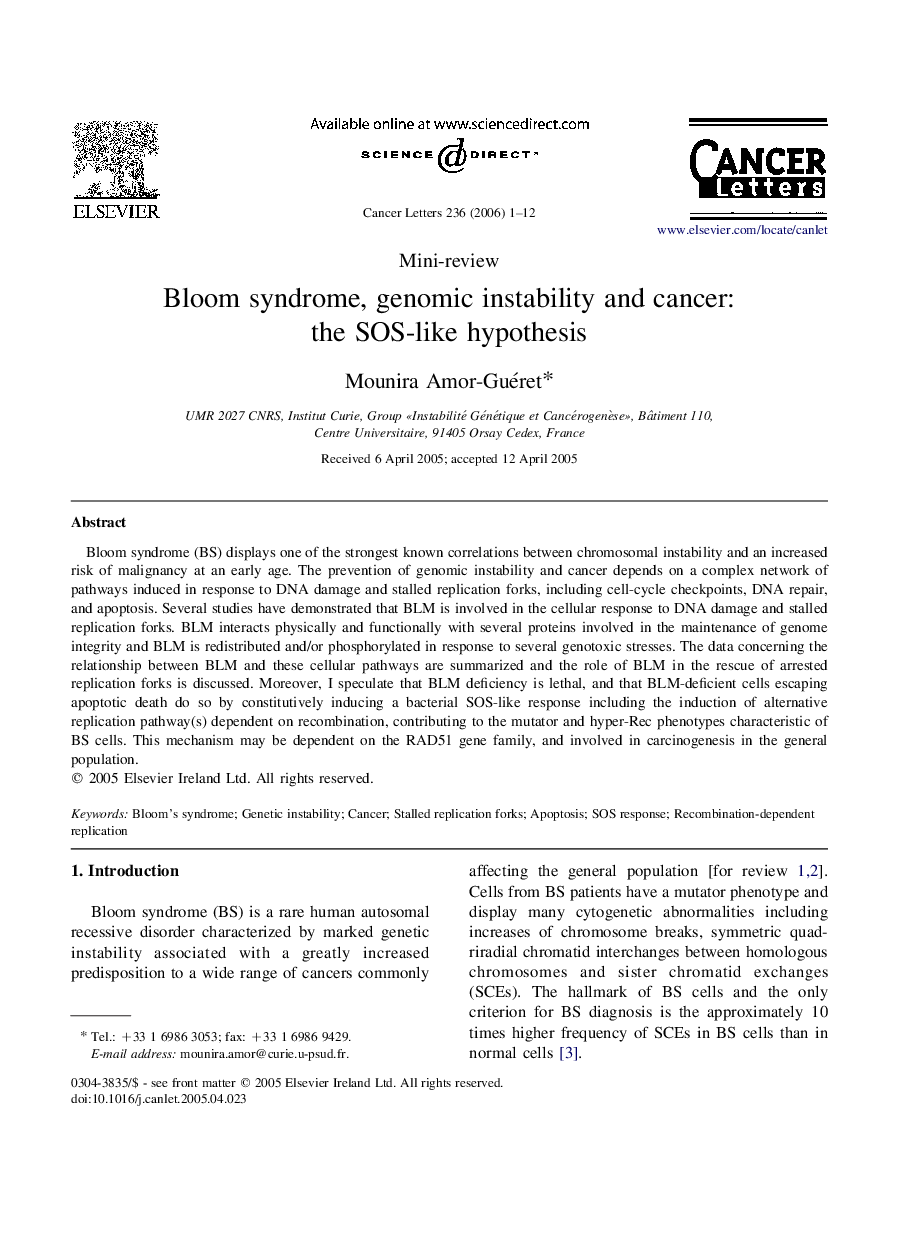| Article ID | Journal | Published Year | Pages | File Type |
|---|---|---|---|---|
| 2115770 | Cancer Letters | 2006 | 12 Pages |
Bloom syndrome (BS) displays one of the strongest known correlations between chromosomal instability and an increased risk of malignancy at an early age. The prevention of genomic instability and cancer depends on a complex network of pathways induced in response to DNA damage and stalled replication forks, including cell-cycle checkpoints, DNA repair, and apoptosis. Several studies have demonstrated that BLM is involved in the cellular response to DNA damage and stalled replication forks. BLM interacts physically and functionally with several proteins involved in the maintenance of genome integrity and BLM is redistributed and/or phosphorylated in response to several genotoxic stresses. The data concerning the relationship between BLM and these cellular pathways are summarized and the role of BLM in the rescue of arrested replication forks is discussed. Moreover, I speculate that BLM deficiency is lethal, and that BLM-deficient cells escaping apoptotic death do so by constitutively inducing a bacterial SOS-like response including the induction of alternative replication pathway(s) dependent on recombination, contributing to the mutator and hyper-Rec phenotypes characteristic of BS cells. This mechanism may be dependent on the RAD51 gene family, and involved in carcinogenesis in the general population.
